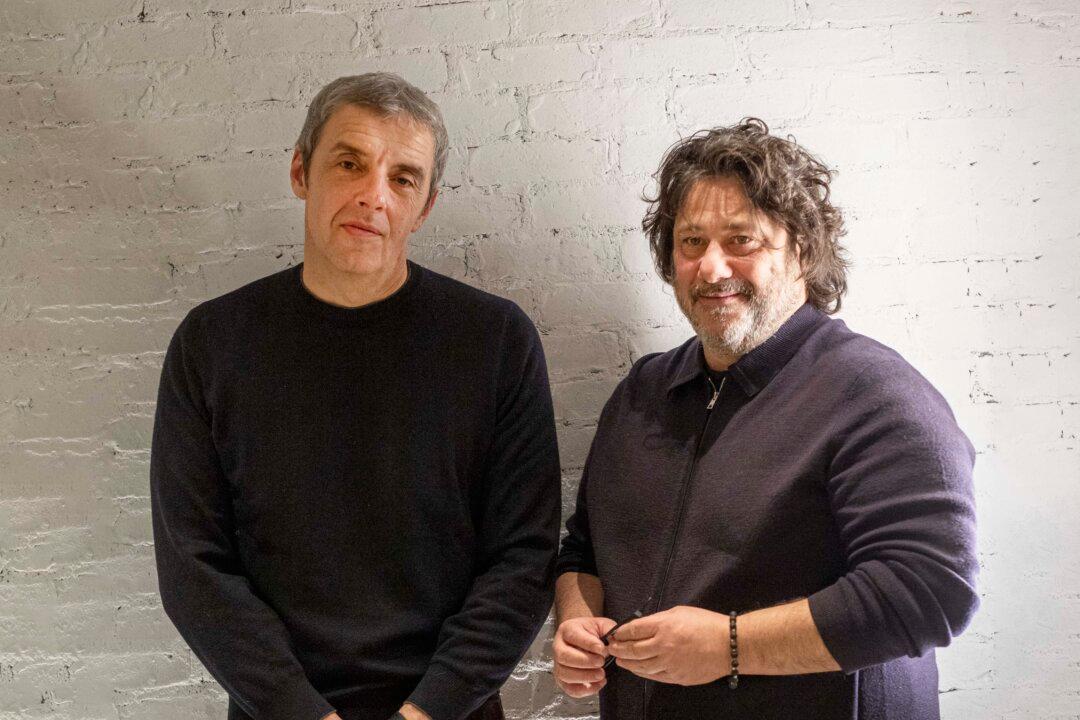[xtypo_dropcap]F[/xtypo_dropcap]or some, New York is a place where they toil night and day so their children can dream big. For others, New York is glamorous—a sprawling metropolis full of new ideas, new opportunities, new beginnings. Still for others, it is simply a great city to grow up in, a city vibrant with so much energy and diversity; it is difficult not to fall in love with it.
Whomever it may be, few of us know much about the history of the city we have come to call the capital of the world. There are some vague memories of old New York that were passed down to us—the Dutch’s purchase of Manhattan for twenty-four dollars, stories of our nation’s first immigrants arriving on Ellis Island, and recollections of vicious gangsters and mob bosses that once ruled the city’s criminal underworld during the Roaring ‘20s.
A number of books have been written on different periods of New York’s fascinating history, chronicling both the dark and the whimsical of the city’s past. Below is a selection of several New York history books that make for some interesting and compelling reads.
This Pulitzer Prize-winning book is a comprehensive, 1000-plus page account of the transformation of New York City, from its geologic origins and the early settlements of the Lenape, a Northeast Native American tribe that first inhabited the New York region, to the thriving industrial age that was taking over the whole world at the turn of the twentieth century. Though the volume of information may seem daunting, the book is well-organized (divided into five parts by time period) and supplemented with various illustrations, drawings, and maps from primary documents. Titled after the nickname for New York that Washington Irving so famously coined in his own periodical, “Salmagundi,” “Gotham” is well-written and thorough in its analysis. Aside from putting their own spin on New York’s saga, Burrows and Wallace also examine literature on New York history that was written by predecessors.
This is perhaps the most definitive history written on the era of organized crime in New York that turned the city into a city of vice. Asbury begins with Hudson River pirates of the mid 1850s and continues chronicling the numerous city gangs that were among the nation’s most powerful and dangerous until their demise in the late ‘20s. Its colorful cast of gang leaders and their prostitute-mistresses was so intriguing it inspired the 2002 Martin Scorsese film of the same name.
A tell-all investigation on New York’s most notorious gangster, Donati read through thousands of municipal archival documents to reconstruct Luciano’s world of drugs, gambling, prostitution, and gang rivalry killings. Donati’s details depict a city hardly recognizable today, where gang leaders convened in rooms and restaurants in modern-day Chinatown and prostitution houses littered the Upper West Side. Those interested in taking a closer look at New York’s heyday as “Sin City” will certainly get their fix in this book.
After landscape ecologist Dr. Eric Sanderson moved to New York from California to work at the Wildlife Conservation Society, he became inspired to recreate the natural landscape of Manhattan, untouched by man, as Henry Hudson saw it in 1609 when he first sailed into New York Bay. Thus, the Mannahatta Project was launched. Named after the Lenape’s name for the island, meaning “island of many hills,” the book contains scores of beautiful photos, maps, and early illustrations and sketches of New York flora and fauna. The book describes Sanderson’s adventures as he explores Manhattan geology and ecology, using digital mapping software to “recreate … each and every hill, valley, stream, spring, beach, forest, cave, wetland, and pond that existed on Mannahatta,” states the project’s website.
Before New York is a cosmopolitan city of skyscrapers and asphalt sidewalks, it is a harbor city with water all around us. “The Big Oyster” describes the period in the city’s history when getting an opportunity to taste New York oysters attracted numerous people to town. Separated into two parts, “The Beds of Eden” and “The Shells of Sodom,” “The Big Oyster” is a highly readable, popular history book that tells the story of how the once oyster-filled harbors of New York disappeared, perhaps forever. In Kurlansky’s own words: “Of the many odd things about New Yorkers, there is this: How is it that a people living in the world’s greatest port, a city with no neighborhood that is far from a waterfront…has lost all connections with the sea, almost forgotten that the sea is there? New Yorkers have lost their oyster, their taste of the sea. This is the story of how it happened.”
Penn Station is one of the busiest and biggest railway stations in the world, with 8.7 million Amtrak passenger arrivals and departures in 2008 alone. “Conquering Gotham” is a fascinating account of how plans for the construction of Penn Station began and how they finally came to fruition when it was completed in 1910. Detailed and meticulous in her research, Jonnes provides a full picture of how Penn Station came into being.
Through five immigrant families who lived in the same tenement during the years between 1863 to 1935, Ziegelman explores the culinary history of Lower East Side immigrants, who sought to preserve the traditions of their home country but did not hesitate to put new twists on their dishes when faced with limited resources and a different environment. “97 Orchard” follows Italian, German, and Jewish cuisine through actual cookbooks and recipes from the new Americans of the late nineteenth and early twentieth centuries.
Though “Gastropolis” is a compilation of pieces from various authors and is not like your standard book (published by Columbia University Press, it can give the appearance of an academic text), it is in fact a great read for foodies and casual eaters alike, with heaps of information about the endlessly diverse and ever-evolving food culture of New York. Written by a slew of certified foodies and university professors, including a food magazine editor, a food historian, an archaeologist, a sociology professor, chefs, and cookbook writers, the book delves into topics like digging for food relics and artifacts in New York, the food of the Lenape, and the history of the city’s Chinese cuisine. The pieces are categorized into four sections: “Places,” “People,” “Trade,” and “Symbols.”
Whomever it may be, few of us know much about the history of the city we have come to call the capital of the world. There are some vague memories of old New York that were passed down to us—the Dutch’s purchase of Manhattan for twenty-four dollars, stories of our nation’s first immigrants arriving on Ellis Island, and recollections of vicious gangsters and mob bosses that once ruled the city’s criminal underworld during the Roaring ‘20s.
A number of books have been written on different periods of New York’s fascinating history, chronicling both the dark and the whimsical of the city’s past. Below is a selection of several New York history books that make for some interesting and compelling reads.
“Gotham: A History of New York City to 1898” by Edwin G. Burrows and Mike Wallace
This Pulitzer Prize-winning book is a comprehensive, 1000-plus page account of the transformation of New York City, from its geologic origins and the early settlements of the Lenape, a Northeast Native American tribe that first inhabited the New York region, to the thriving industrial age that was taking over the whole world at the turn of the twentieth century. Though the volume of information may seem daunting, the book is well-organized (divided into five parts by time period) and supplemented with various illustrations, drawings, and maps from primary documents. Titled after the nickname for New York that Washington Irving so famously coined in his own periodical, “Salmagundi,” “Gotham” is well-written and thorough in its analysis. Aside from putting their own spin on New York’s saga, Burrows and Wallace also examine literature on New York history that was written by predecessors.
“The Gangs of New York” by Herbert Asbury
This is perhaps the most definitive history written on the era of organized crime in New York that turned the city into a city of vice. Asbury begins with Hudson River pirates of the mid 1850s and continues chronicling the numerous city gangs that were among the nation’s most powerful and dangerous until their demise in the late ‘20s. Its colorful cast of gang leaders and their prostitute-mistresses was so intriguing it inspired the 2002 Martin Scorsese film of the same name.
“Lucky Luciano: The Rise and Fall of a Mob Boss” by William Donati
A tell-all investigation on New York’s most notorious gangster, Donati read through thousands of municipal archival documents to reconstruct Luciano’s world of drugs, gambling, prostitution, and gang rivalry killings. Donati’s details depict a city hardly recognizable today, where gang leaders convened in rooms and restaurants in modern-day Chinatown and prostitution houses littered the Upper West Side. Those interested in taking a closer look at New York’s heyday as “Sin City” will certainly get their fix in this book.
“Mannahatta: A Natural History of New York City” by Eric W. Sanderson
After landscape ecologist Dr. Eric Sanderson moved to New York from California to work at the Wildlife Conservation Society, he became inspired to recreate the natural landscape of Manhattan, untouched by man, as Henry Hudson saw it in 1609 when he first sailed into New York Bay. Thus, the Mannahatta Project was launched. Named after the Lenape’s name for the island, meaning “island of many hills,” the book contains scores of beautiful photos, maps, and early illustrations and sketches of New York flora and fauna. The book describes Sanderson’s adventures as he explores Manhattan geology and ecology, using digital mapping software to “recreate … each and every hill, valley, stream, spring, beach, forest, cave, wetland, and pond that existed on Mannahatta,” states the project’s website.
“The Big Oyster: History on the Half Shell” by Mark Kurlansky
Before New York is a cosmopolitan city of skyscrapers and asphalt sidewalks, it is a harbor city with water all around us. “The Big Oyster” describes the period in the city’s history when getting an opportunity to taste New York oysters attracted numerous people to town. Separated into two parts, “The Beds of Eden” and “The Shells of Sodom,” “The Big Oyster” is a highly readable, popular history book that tells the story of how the once oyster-filled harbors of New York disappeared, perhaps forever. In Kurlansky’s own words: “Of the many odd things about New Yorkers, there is this: How is it that a people living in the world’s greatest port, a city with no neighborhood that is far from a waterfront…has lost all connections with the sea, almost forgotten that the sea is there? New Yorkers have lost their oyster, their taste of the sea. This is the story of how it happened.”
“Conquering Gotham: Building Penn Station and Its Tunnels” by Jill Jonnes
Penn Station is one of the busiest and biggest railway stations in the world, with 8.7 million Amtrak passenger arrivals and departures in 2008 alone. “Conquering Gotham” is a fascinating account of how plans for the construction of Penn Station began and how they finally came to fruition when it was completed in 1910. Detailed and meticulous in her research, Jonnes provides a full picture of how Penn Station came into being.
“97 Orchard: An Edible History of Five Immigrant Families in One New York Tenement” by Jane Ziegelman
Through five immigrant families who lived in the same tenement during the years between 1863 to 1935, Ziegelman explores the culinary history of Lower East Side immigrants, who sought to preserve the traditions of their home country but did not hesitate to put new twists on their dishes when faced with limited resources and a different environment. “97 Orchard” follows Italian, German, and Jewish cuisine through actual cookbooks and recipes from the new Americans of the late nineteenth and early twentieth centuries.
“Gastropolis: Food and New York City” edited by Anne Hauck-Lawson and Jonathan Deutsch
Though “Gastropolis” is a compilation of pieces from various authors and is not like your standard book (published by Columbia University Press, it can give the appearance of an academic text), it is in fact a great read for foodies and casual eaters alike, with heaps of information about the endlessly diverse and ever-evolving food culture of New York. Written by a slew of certified foodies and university professors, including a food magazine editor, a food historian, an archaeologist, a sociology professor, chefs, and cookbook writers, the book delves into topics like digging for food relics and artifacts in New York, the food of the Lenape, and the history of the city’s Chinese cuisine. The pieces are categorized into four sections: “Places,” “People,” “Trade,” and “Symbols.”








